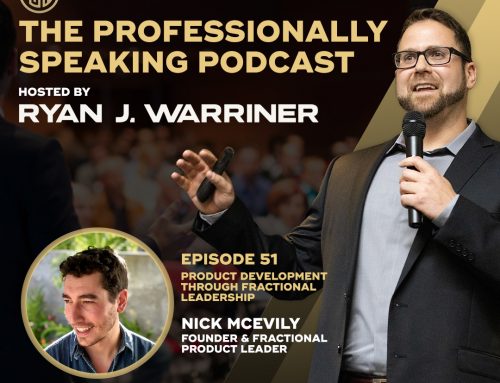Create an enjoyable experience for your audience and maximize your results!
Adapt for your audience
Great speakers are flexible, adaptable, and always mining for more data. They realize that the way they instinctively learn and process information may be quite different from their audience. That being the case, some content and information they find interesting may be considered unnecessary to their audience (and vice versa).
Projection bias
In any communication, your audience is a crucial component in the equation for success. It’s not enough to simply deliver content to people, which is unfortunately the approach many professionals take when they’re tasked with a presentation. On the surface, it makes sense to unpack content for their audience as they, themselves, have come to understand it. But, therein lies the problem. Because people are individuals and have had unique experiences, they don’t always share priorities. This tendency is commonly referred to as Projection Bias. As presenters, we should strive to determine what these priorities may be in advance.
Advanced interpretation
Additionally, presenters typically have had the benefit of time, analysis, reflection, etc. to process their content. Sometimes, they have even formulated an educated opinion and next steps from their analysis before they begin designing. In this situation, presenters tend to turn an informative presentation into a persuasive one and leapfrog over the important details that got them there. I call this “fast-tracking” a presentation, and it’s a clear sign that the presenter has not considered their audience.
The right questions
Any communication expert worth their salt will tell you that it’s important to understand your audience before, during, and after your presentation to achieve optimal results. However, less commonly discussed are the more specific details that presenters should be striving to understand about their audience. Over the years, many of my clients and students have asked the key questions:
- What do I need to know about them?
- How will information about my audience help my presentation?
- How can I use what I know about my audience to benefit my presentation?
Basically, the more you know about your audience, the more you can customize your presentation for them, and increase your probability of achieving a successful outcome.
The most important information you should strive to identify is how your audience members prefer to receive information. For example, do they prefer presentations to be concise, focusing on only the big picture items? Do they prefer to understand the reasons and causes behind the big picture results? Do they prefer to passively analyze content or actively engage with it by asking questions? Do they prefer statistics? If so, how specific?
Tip: The best way to start is by focusing on one single audience member.
The more you know about how your audience prefers to process information, the more enjoyable of an experience you can create for them. In the end, your task is not to showcase your knowledge and understanding of a topic: it’s to make an impact on your audience.
The next time you’re faced with a presentation, put yourself in the audience members’ shoes, then proceed accordingly.
I wish you continued success in your future speaking endeavors!
For more professional speaking insights and free resources, visit Professional Presentation Services, or follow us on LinkedIn.









